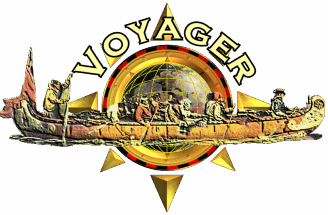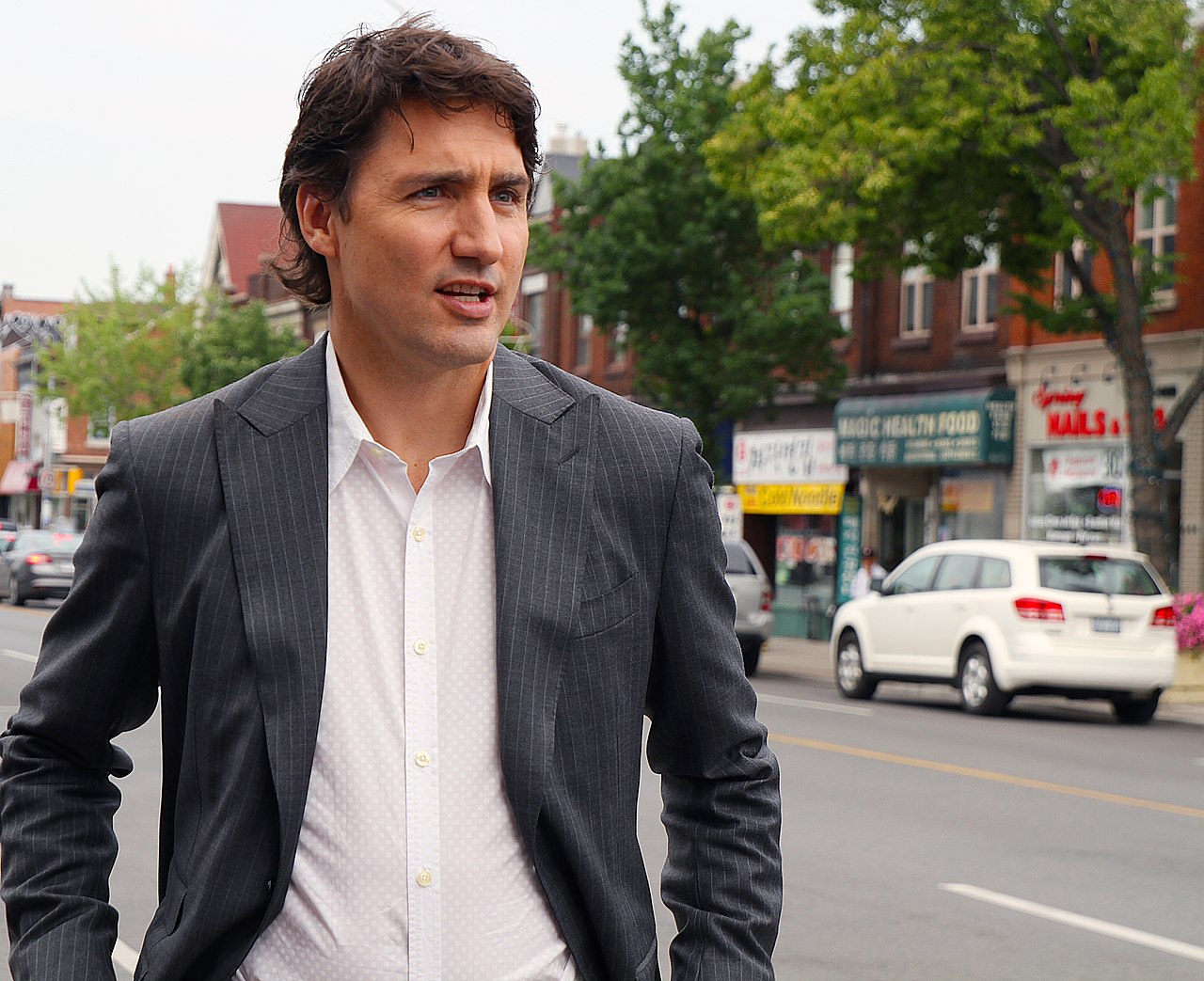The decline in public support for Prime Minister Justin Trudeau is a striking example of how political fortunes can shift in Canada. Once a beacon of hope for progressive Canadians, Trudeau now finds himself facing widespread dissatisfaction from an electorate increasingly disillusioned with his government’s performance. Several factors contribute to his waning popularity, including the perception of a government overly focused on divisive social issues, mounting frustrations over economic challenges, and a growing disconnect with the political centre.
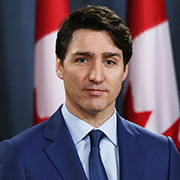
The Roots of Trudeau’s Decline
Trudeau’s emphasis on progressive values and social reform was instrumental in his ascent to power in 2015. However, as his tenure has progressed, his prioritization of “woke” issues—such as equity, diversity, and climate justice—has alienated significant portions of the electorate. Critics argue that this focus often comes at the expense of addressing pressing economic concerns, such as inflation, housing affordability, and wage stagnation. In the words of political scientist Lydia Miljan, “Trudeau’s government risks becoming more about symbolism than substance, appealing to niche audiences while neglecting the broader concerns of Canadians.”
The burgeoning budget deficit, which ballooned during the COVID-19 pandemic, has also become a major point of contention. While the government’s emergency spending measures were initially seen as necessary, the lack of a coherent plan to manage post-pandemic economic recovery has drawn criticism. Trudeau’s opponents on the right accuse him of fiscal irresponsibility, while those in the political centre—traditionally a Liberal stronghold—express concern over the long-term implications of unchecked spending.
Furthermore, Trudeau’s shift to the political left has fractured his coalition. Many centrist voters who supported him in 2015 and 2019 feel alienated by policies they perceive as overly ideological or impractical. Meanwhile, his adversaries, particularly the Conservatives under Pierre Poilievre, have gained traction by framing Trudeau as out of touch with the struggles of ordinary Canadians.
Historical Precedents of Falling Governments
To understand Trudeau’s current predicament, it is instructive to examine previous instances in Canadian history where governments lost the trust of the people. These episodes highlight recurring themes of scandal, economic mismanagement, and political miscalculation. Among them, the experiences of John A. Macdonald, R. B. Bennett, John Diefenbaker, Brian Mulroney, Paul Martin, and Pierre Trudeau provide key lessons on the volatile nature of political popularity.
The history of Canadian politics is replete with examples of governments losing the trust of the electorate, often as a result of scandal, economic mismanagement, or evolving public sentiment. These episodes not only highlight the vulnerabilities of political leaders but also underscore the resilience of Canadian democracy, which allows for periodic recalibration of the nation’s priorities. From John A. Macdonald’s Pacific Scandal to Brian Mulroney’s monumental collapse, these moments have shaped the contours of Canadian governance. Examining these historical episodes, including Pierre Trudeau’s dramatic fall from grace in 1979 and subsequent comeback in 1980, offers critical insights into the challenges currently facing Justin Trudeau’s government.
Pierre Trudeau’s Loss in 1979 and Triumphant Comeback
Pierre Trudeau, like his son Justin decades later, was a charismatic and polarizing figure in Canadian politics. His rise to power in 1968 on the wave of “Trudeaumania” transformed him into a national icon, and his first years in office saw significant accomplishments, including the Official Languages Act and a series of social reforms. However, by the late 1970s, his government’s popularity had waned. A combination of high inflation, economic stagnation, and growing alienation in Western Canada—fueled in part by Trudeau’s National Energy Program—eroded his support. Historian John English observed, “Trudeau’s aura of invincibility, cultivated during his early years, began to falter as the practical challenges of governance exposed the limits of charisma.”
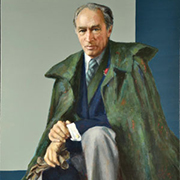
The 1979 federal election marked a turning point. Trudeau’s Liberals were defeated by Joe Clark’s Progressive Conservatives, a youthful and inexperienced leader whose campaign focused on providing an alternative to Trudeau’s perceived arrogance and centralizing tendencies. However, Clark’s tenure as Prime Minister was short-lived. His government, which held only a minority in Parliament, was brought down in December 1979 by a budget proposal that alienated key constituencies and failed to gain parliamentary support. As political scientist Stephen Clarkson noted, “Clark’s inability to navigate the treacherous waters of minority governance paved the way for Trudeau’s unlikely return.”
In the 1980 federal election, Pierre Trudeau staged one of the most remarkable political comebacks in Canadian history. Campaigning on themes of experience and stability, Trudeau capitalized on the Progressive Conservatives’ missteps and the electorate’s growing disillusionment with Clark. His return to power was marked by decisive actions, including the patriation of the Canadian Constitution in 1982, which secured his legacy despite ongoing regional tensions.
The parallels to Justin Trudeau’s current situation are striking. Like his father, Justin Trudeau enjoyed immense popularity early in his tenure, but repeated ethical controversies, economic challenges, and regional divisions have eroded his support. Both father and son faced accusations of arrogance, and both struggled with alienation in Western Canada. However, Pierre Trudeau’s 1980 comeback demonstrates that even in moments of significant unpopularity, the electorate can be swayed by a leader who convincingly articulates a vision for the future.
Other Episodes of Government Unpopularity
John A. Macdonald and the Pacific Scandal: A Foundational Crisis
The Pacific Scandal of 1873 stands as a watershed moment in Canadian political history, a dramatic episode that reshaped public expectations of accountability and ethics in governance. The scandal erupted during the nascent years of Confederation, as the country sought to bind its far-flung regions through the ambitious project of the Canadian Pacific Railway. This railway, seen as essential for uniting the provinces and securing the fledgling nation’s western frontier, became the focal point of one of Canada’s first major political crises.
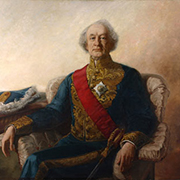
At the heart of the scandal was Sir Hugh Allan, a prominent Montreal financier and industrialist. Allan sought to secure the lucrative contract for building the transcontinental railway, which promised immense profits and national prestige. To bolster his bid, Allan funneled substantial financial contributions to Prime Minister John A. Macdonald and key members of his Conservative government during the 1872 federal election campaign. These payments, amounting to tens of thousands of dollars—a staggering sum at the time—were intended to ensure that Allan’s company, the Canada Pacific Railway Company, would be awarded the contract.
The arrangement might have remained secret had it not been for the publication of incriminating letters in April 1873. Opposition members, particularly Liberal leader Alexander Mackenzie, seized on the revelations, accusing Macdonald and his government of gross corruption. The letters explicitly linked the Prime Minister to the financial transactions, revealing that Allan’s payments were intended to curry favor with the government. Macdonald’s infamous note, in which he pleaded with Allan for additional funds to secure election victories, became a symbol of his entanglement in the scandal.
Public reaction was swift and unforgiving. The scandal struck at the core of Canadians’ trust in their government, raising questions about the integrity of their leaders and the fledgling nation’s political foundations. Newspapers of the time fanned the flames, with headlines decrying the betrayal of public trust. Macdonald’s defenders argued that the funds were typical campaign contributions and did not directly influence the awarding of contracts. However, this defense rang hollow in the face of mounting evidence, which suggested a quid pro quo arrangement.
As the opposition intensified its attacks, the political ground beneath Macdonald began to crumble. His government’s majority in the House of Commons eroded as members of his own party distanced themselves from the controversy. Facing an almost certain vote of no confidence, Macdonald resigned in November 1873, marking the end of his government’s first tenure. In the ensuing election, the Liberals, under Alexander Mackenzie, capitalized on the Conservatives’ tarnished reputation, ascending to power with a promise to restore integrity and transparency to governance.
The Pacific Scandal not only ended Macdonald’s premiership but also had lasting implications for Canadian politics. It marked the first significant instance of a government being brought down by public outrage over corruption. As historian Donald Creighton observed, “The Pacific Scandal was a defining moment in Canadian politics, where the ideal of accountability was tested and ultimately upheld by the electorate.” For Canadians, it underscored the importance of holding leaders accountable and set a precedent for the expectation that public office should be conducted with integrity.
Macdonald, however, was not consigned to political obscurity. In one of the most remarkable comebacks in Canadian history, he returned to power in 1878, demonstrating his resilience and political acumen. His ability to reframe his vision for the country and rebuild his political base underscored his enduring appeal, though the Pacific Scandal would forever remain a blemish on his legacy.
The Pacific Scandal thus occupies a dual role in Canadian history. On the one hand, it exposed the vulnerabilities of a young political system to corruption and highlighted the necessity for reforms to ensure transparency. On the other, it demonstrated the resilience of Canadian democracy, where public outrage and parliamentary mechanisms succeeded in holding leaders to account. This episode continues to serve as a reminder of the delicate balance between power and accountability in a democratic society.
R. B. Bennett and the Great Depression: Mismanagement and Isolation
R. B. Bennett’s tenure as Prime Minister from 1930 to 1935 remains one of the most challenging and scrutinized periods in Canadian political history. Tasked with leading the country through the Great Depression, Bennett’s Conservative government quickly became emblematic of the era’s failures. Despite his genuine efforts to address the unprecedented economic crisis, his policies were widely regarded as ineffective, poorly timed, and insufficient to meet the scale of the challenges facing Canadians. Ultimately, his inability to restore hope or prosperity led to his government’s decisive defeat in the 1935 federal election, marking a pivotal shift in Canadian politics.
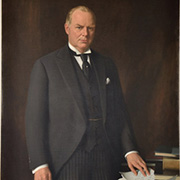
The Early Promise and the Onset of the Depression
When Bennett assumed office in 1930, Canada was already grappling with the devastating effects of the Great Depression. Unemployment was soaring, businesses were closing, and entire communities were slipping into poverty. Bennett campaigned on a platform of economic action, promising Canadians that he would “blast” the economy back to health with decisive interventions. This rhetoric resonated with voters who were disillusioned with the perceived inaction of William Lyon Mackenzie King’s Liberal government. Bennett’s landslide victory reflected an electorate eager for bold solutions to an unprecedented crisis.
However, Bennett quickly discovered that governing during an economic catastrophe was far more complex than campaigning against one. The collapse of global markets, declining commodity prices, and reduced international trade were forces beyond any one leader’s control. Canada, heavily reliant on exports such as wheat and timber, was hit particularly hard. Unemployment climbed to nearly 30 percent by 1933, leaving millions of Canadians destitute.
Bennett’s Initial Response: Conventional Conservatism
In the early years of his administration, Bennett adhered to traditional conservative economic principles, focusing on fiscal restraint and balanced budgets. He believed that economic recovery would emerge naturally through market forces, and his government implemented tariff increases to protect Canadian industries from foreign competition. These measures, however, proved disastrous. Instead of stimulating domestic production, higher tariffs exacerbated the decline in international trade, further isolating Canada’s economy from global markets.
Bennett’s failure to provide immediate relief to struggling Canadians earned him widespread criticism. Shantytowns, mockingly referred to as “Bennett buggies” and “Bennett burghs,” sprang up across the country as unemployed workers and their families sought shelter in makeshift homes. These symbols of poverty became a visceral indictment of his government’s inability to address the crisis.
The Shift to the “New Deal” Approach
By 1934, with the economy still in shambles and public dissatisfaction mounting, Bennett attempted to pivot his approach. Inspired by Franklin D. Roosevelt’s New Deal in the United States, he introduced a series of social and economic reforms aimed at providing relief and restructuring the Canadian economy. These measures included unemployment insurance, minimum wage laws, and public works projects designed to create jobs. Bennett also proposed establishing a national system of health insurance and labor regulations to improve working conditions.
While these initiatives demonstrated a recognition of the need for more active government intervention, they were widely criticized as too little, too late. Bennett’s earlier commitment to fiscal conservatism had alienated many Canadians, and his sudden shift to progressive policies was seen by many as insincere or opportunistic. Furthermore, the implementation of these policies faced significant resistance from provincial governments and bureaucratic hurdles, limiting their immediate impact.
The Political Fallout and the 1935 Election
By the time the 1935 federal election approached, the damage to Bennett’s reputation was irreversible. Canadians had lost faith in his ability to lead the country out of the Depression, and his New Deal-style reforms failed to sway an electorate desperate for tangible results. The Liberals, led by William Lyon Mackenzie King, capitalized on Bennett’s unpopularity by presenting themselves as pragmatic and steady stewards of government. King’s message of cautious optimism and incremental change resonated with voters weary of Bennett’s perceived erratic leadership.
The election results were a landslide victory for the Liberals. Bennett’s Conservatives were reduced to a mere 39 seats, and Mackenzie King returned to power, ushering in a new era of governance. The defeat marked not only the end of Bennett’s political career but also a broader shift in Canadian politics toward more interventionist economic policies and the eventual establishment of the welfare state.
Legacy of Bennett’s Leadership
Historians continue to debate Bennett’s legacy. Some, like Desmond Morton, argue that Bennett was a well-intentioned leader overwhelmed by forces beyond his control. Morton remarked, “Bennett’s government, despite its good intentions, was overwhelmed by forces it could not control,” highlighting the enormity of the challenges he faced. Others criticize him for his failure to act decisively in the early years of the Depression, arguing that his adherence to outdated economic principles prolonged the suffering of millions.
Bennett’s tenure offers valuable lessons about the limits of leadership during times of crisis. His inability to adapt quickly to the changing economic landscape and to communicate effectively with the public underscores the importance of both strategic vision and empathy in political leadership. While his late-term reforms hinted at a more progressive approach, they were ultimately too delayed to salvage his government or his place in the public’s esteem.
R. B. Bennett’s government became a symbol of inadequacy during the Great Depression, a period defined by economic despair and social upheaval. His failure to provide immediate and effective relief to Canadians, combined with his belated and inconsistent shift toward progressive policies, sealed his fate as one of the most unpopular leaders in Canadian history. The 1935 election not only ended his political career but also marked a turning point in Canadian governance, paving the way for the eventual development of a more robust social safety net. Bennett’s story serves as a cautionary tale of leadership under duress, illustrating the complexities of navigating a nation through unprecedented challenges.
Diefenbaker’s Decline: The Danger of Fractured Leadership
John Diefenbaker’s tenure as Prime Minister of Canada, from 1957 to 1963, is a study in the volatile dynamics of political leadership. His initial triumphs, marked by a sweeping electoral victory in 1958 that delivered the largest majority in Canadian history, soon gave way to turbulence and decline. Diefenbaker’s inability to maintain a consistent policy direction, coupled with a series of divisive decisions, alienated both his domestic electorate and Canada’s international allies. By 1963, his government had lost the confidence of the nation, paving the way for Lester Pearson’s Liberals to assume power. Diefenbaker’s rise and fall reflect the challenges of managing expectations and navigating the pressures of a rapidly changing world.
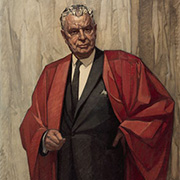
The 1958 Landslide and Early Promise
Diefenbaker’s victory in 1958 was a remarkable achievement, driven by his populist appeal and ability to connect with ordinary Canadians. His rhetoric championed “One Canada,” emphasizing unity across the country’s diverse regions and demographics. Promising to bring modernization to rural areas and advocating for policies that resonated with Western Canada, he galvanized support from voters who felt neglected by previous governments. Historian John English described this period as one of “unbridled optimism, where Diefenbaker’s charm and vision electrified a nation eager for renewal.”
However, this optimism masked underlying weaknesses in his leadership style. Diefenbaker’s reluctance to delegate authority, combined with his unpredictable decision-making, would soon become liabilities that undermined his government’s effectiveness.
The Cancellation of the Avro Arrow
One of the most controversial decisions of Diefenbaker’s tenure was the cancellation of the Avro Arrow program in 1959. The Avro Arrow, an advanced jet interceptor developed by A.V. Roe Canada, was a symbol of Canadian technological innovation and national pride. Its abrupt termination not only devastated the Canadian aerospace industry but also left a legacy of bitterness among workers, engineers, and the broader public.
Diefenbaker justified the decision on economic grounds, arguing that the program was too costly and that American-made alternatives, such as the BOMARC missile, offered a more affordable solution. Critics, however, viewed the cancellation as short-sighted and indicative of Diefenbaker’s inability to fully appreciate the strategic importance of the project. The decision led to significant job losses and a brain drain, as many of Canada’s top engineers emigrated to the United States and other countries.
The Avro Arrow’s cancellation also highlighted Diefenbaker’s growing tensions with military and industrial stakeholders, further eroding his credibility. The emotional weight of the decision was felt across the nation, becoming a symbol of lost potential and failed leadership.
Indecision on Nuclear Weapons
Diefenbaker’s handling of nuclear weapons policy further weakened his standing both at home and abroad. Canada’s role in the Cold War required navigating a delicate balance between its commitments to NATO and NORAD and its national interests. Diefenbaker’s indecision on whether Canada should accept nuclear warheads for American-made BOMARC missiles stationed on Canadian soil created a political firestorm.
His reluctance to take a clear position frustrated allies, particularly the United States, whose President, John F. Kennedy, became openly critical of Diefenbaker’s leadership. The strained relationship between Diefenbaker and Kennedy, marked by mutual distrust, symbolized Canada’s diminishing influence on the international stage. Domestically, the nuclear weapons issue divided the public and members of Diefenbaker’s own cabinet, further undermining his authority.
Economic Challenges and Political Turmoil
In addition to these controversies, Diefenbaker’s government struggled to address economic challenges, including rising unemployment and inflation. His economic policies were perceived as erratic, and his government’s failure to implement long-term solutions alienated voters who had initially supported him for his promises of progress and stability.
Diefenbaker’s populist style, which had been his greatest asset in 1958, increasingly appeared as a liability. His tendency to appeal to emotion over reason, combined with a propensity for dramatic and combative rhetoric, alienated moderate voters who yearned for steady and pragmatic governance. As historian John English noted, “Diefenbaker’s initial charm gave way to frustration as Canadians yearned for stability and clarity.”
The 1963 Election and Defeat
By the time of the 1963 election, Diefenbaker’s government was in disarray. The Liberals, under Lester Pearson, capitalized on the public’s growing dissatisfaction, presenting themselves as a rational and cohesive alternative. Pearson’s calm demeanor and focus on consensus-building contrasted sharply with Diefenbaker’s increasingly erratic and combative style.
The election results were a resounding rejection of Diefenbaker’s leadership. The Liberals won 128 seats to the Conservatives’ 95, marking the end of Diefenbaker’s tumultuous tenure as Prime Minister. While he continued to serve as the leader of the opposition, his influence in Canadian politics steadily waned in the years that followed.
Legacy of Diefenbaker’s Leadership
Diefenbaker’s tenure as Prime Minister remains a complex and often polarizing chapter in Canadian history. His early promise as a unifying figure gave way to a tenure marked by inconsistency and divisiveness. The cancellation of the Avro Arrow and his indecision on nuclear weapons policy stand as emblematic of the missed opportunities and fractured leadership that defined his government.
Despite these shortcomings, Diefenbaker’s legacy is not without its achievements. He championed the Canadian Bill of Rights, a landmark piece of legislation that laid the groundwork for the later Charter of Rights and Freedoms. His commitment to expanding opportunities for Western Canada and rural communities also reflected his vision for a more inclusive national identity.
Ultimately, Diefenbaker’s story is a cautionary tale of how charisma and vision must be matched by consistency and competence. His rise and fall underscore the delicate balance required to sustain political leadership in a rapidly changing world. As Canada grappled with the challenges of the Cold War and domestic modernization, Diefenbaker’s inability to provide clarity and stability became his undoing, leaving a legacy that is both instructive and cautionary.
Brian Mulroney and the Collapse of the Progressive Conservatives
Brian Mulroney’s tenure as Prime Minister from 1984 to 1993 was marked by bold initiatives and transformative policies that reshaped Canada’s economic and political landscape. Yet, his time in office also stands as a cautionary tale of how leadership, no matter how ambitious, can falter under the weight of public dissatisfaction and political missteps. While Mulroney’s government achieved significant milestones, including the Canada-U.S. Free Trade Agreement and pivotal environmental accords, it became increasingly unpopular due to controversial policies such as the Goods and Services Tax (GST) and the divisive constitutional debates surrounding the Meech Lake and Charlottetown Accords. By the end of his tenure, the Progressive Conservatives suffered one of the most devastating defeats in Canadian political history, reduced to just two seats in the 1993 federal election. Historian Robert Bothwell succinctly encapsulated the era: “Mulroney’s vision was drowned in a sea of discontent, leaving his party in ruins.”
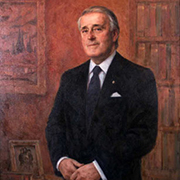
Mulroney’s Early Promise and Economic Vision
Brian Mulroney entered office in 1984 on a wave of optimism and support, leading the Progressive Conservatives to a commanding majority government. His campaign emphasized economic renewal, national unity, and a commitment to reversing the perceived stagnation of Pierre Trudeau’s later years. Mulroney’s charisma, coupled with his ability to build coalitions across regions and linguistic lines, positioned him as a leader capable of bridging the divides in Canadian society.
Central to Mulroney’s economic agenda was the Canada-U.S. Free Trade Agreement (FTA), signed in 1988. This historic deal eliminated tariffs between the two nations, fostering increased trade and economic integration. While praised by business leaders and economists for enhancing Canada’s competitiveness, the FTA was highly controversial, with critics arguing that it would erode Canada’s sovereignty and lead to job losses in vulnerable industries. The 1988 federal election became a referendum on free trade, and Mulroney’s Progressive Conservatives secured a second majority, albeit with reduced support, affirming his mandate to proceed.
The Goods and Services Tax (GST): A Political Lightning Rod
Despite the economic benefits of free trade, Mulroney’s government soon faced significant backlash over its introduction of the Goods and Services Tax (GST) in 1991. Designed to replace the Manufacturer’s Sales Tax, the GST was a 7% consumption tax aimed at broadening the tax base and improving economic efficiency. While economists praised the GST as a sound policy, it became a lightning rod for public anger, perceived as an unfair burden on ordinary Canadians.
The introduction of the GST was marred by widespread opposition, with protests erupting across the country. The Senate initially blocked the legislation, prompting Mulroney to invoke an extraordinary constitutional provision to appoint eight additional senators, ensuring its passage. This maneuver, while legal, was seen by many as heavy-handed and further fueled discontent.
The GST became emblematic of a government perceived as out of touch with the struggles of ordinary Canadians. It also contributed to the perception of Mulroney as a leader more concerned with grand visions than the immediate needs of his constituents. Historian Robert Bothwell observed, “The GST, while economically sound, became politically toxic, a symbol of Mulroney’s inability to connect with the people he governed.”
The Constitutional Crisis: Meech Lake and Charlottetown Accords
Beyond economic policy, Mulroney’s efforts to address Canada’s enduring constitutional challenges further eroded his popularity. The Meech Lake Accord, introduced in 1987, aimed to bring Quebec into the constitutional fold following its rejection of the 1982 Constitution Act. The accord sought to recognize Quebec as a “distinct society” and provide provinces with greater powers. However, the agreement faced significant opposition from Indigenous leaders, women’s groups, and smaller provinces, who argued that it excluded their voices and priorities.
When the Meech Lake Accord failed in 1990, largely due to the resistance of Manitoba MLA Elijah Harper and Newfoundland Premier Clyde Wells, it sparked a national unity crisis. Mulroney’s subsequent attempt at constitutional reform, the Charlottetown Accord of 1992, sought to address the concerns raised during Meech Lake by including provisions for Indigenous self-government and Senate reform. However, the Charlottetown Accord was defeated in a national referendum, with Canadians rejecting the proposal as overly complex and unrepresentative of their needs.
The back-to-back failures of these accords severely damaged Mulroney’s credibility as a unifier. Instead of healing the divisions within Canada, these efforts deepened regional and cultural fractures, leaving many Canadians disillusioned with the political process. Historian Janet Ajzenstat remarked, “The constitutional debates of the Mulroney era revealed the limits of leadership in a fragmented federation. Mulroney’s vision of unity was undone by the very diversity he sought to reconcile.”
The 1993 Electoral Collapse
By the early 1990s, Mulroney’s government was deeply unpopular. The combination of the GST, the failures of the constitutional accords, and a lingering recession created a perfect storm of discontent. Public opinion polls showed record-low approval ratings for Mulroney, who became a polarizing figure even within his own party.
In an attempt to salvage the party’s fortunes, Mulroney resigned in 1993, paving the way for Kim Campbell to become Canada’s first female Prime Minister. However, the damage was already done. In the 1993 federal election, the Progressive Conservatives were decimated, reduced from 156 seats to just two. The collapse of the party was unprecedented, marking one of the worst defeats for a governing party in Canadian history.
The election also saw the rise of new political forces, including the Reform Party in Western Canada and the Bloc Québécois in Quebec, which filled the vacuum left by the Conservatives’ collapse. Mulroney’s grand coalition, which had once united disparate regions and interests, was shattered, leaving the Progressive Conservatives as a diminished force in Canadian politics for over a decade.
Legacy and Reflections
Brian Mulroney’s leadership remains one of the most polarizing periods in Canadian history. His achievements, particularly the Free Trade Agreement and his environmental initiatives, including the Canada-U.S. Acid Rain Treaty, have been lauded for their long-term benefits. Yet, these accomplishments were overshadowed by the controversies and political fallout of his later years in office.
The introduction of the GST and the failures of the Meech Lake and Charlottetown Accords left an indelible mark on his legacy, symbolizing the disconnect between his ambitious vision and the frustrations of ordinary Canadians. Mulroney’s perceived arrogance and detachment from public concerns further alienated voters, contributing to the catastrophic defeat of his party in 1993.
Historian Robert Bothwell aptly summarized Mulroney’s tenure: “Mulroney’s vision was drowned in a sea of discontent, leaving his party in ruins.” His story serves as a powerful reminder of the risks inherent in transformative leadership and the importance of maintaining trust and connection with the electorate. While Mulroney’s policies continue to influence Canada’s trajectory, his political downfall underscores the delicate balance between ambition and accountability in democratic governance.
Paul Martin and the Sponsorship Scandal: A Stain Too Deep
Paul Martin’s tenure as Prime Minister, from 2003 to 2006, was overshadowed by one of the most significant political scandals in Canadian history—the Sponsorship Scandal. This controversy, which involved the mismanagement and misappropriation of federal funds in Quebec, not only tarnished the Liberal Party’s image but also underscored deep issues of accountability and transparency in Canadian governance. Despite Martin’s genuine attempts to reform the party and distance himself from the scandal, the damage to the Liberals’ reputation proved insurmountable, culminating in their defeat by Stephen Harper’s Conservatives in the 2006 federal election.
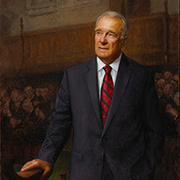
The Sponsorship Scandal: Origins and Fallout
The Sponsorship Scandal, also known as “Adscam,” originated during the tenure of Martin’s predecessor, Jean Chrétien. Designed to counter Quebec separatism in the aftermath of the 1995 referendum, the Sponsorship Program aimed to promote federalism in Quebec by funding advertising campaigns and events that highlighted Canada’s contributions to the province. However, a 2004 report by Auditor General Sheila Fraser revealed that the program was rife with corruption. Millions of dollars had been funneled to Liberal-connected advertising firms for little or no work, with some funds reportedly diverted back to the Liberal Party as kickbacks.
For Canadians, the revelations were shocking. The scandal struck at the heart of public trust, suggesting that the governing party had used taxpayer money not only wastefully but also unethically to sustain its own political advantage. As political scientist Stephen Clarkson noted, “The Sponsorship Scandal was not just a financial misstep; it was a betrayal of the public’s trust, a symbol of a party that had lost its moral compass.”
Martin’s Leadership: Reform Amid Controversy
Paul Martin, who became Prime Minister in late 2003, faced the unenviable task of managing the fallout from a scandal that had its roots in a program he did not initiate. Known for his reputation as a fiscal reformer and architect of Canada’s budgetary surpluses in the 1990s, Martin sought to distance himself from the Sponsorship Program by emphasizing transparency and accountability. One of his first actions was to establish the Gomery Commission in 2004, a public inquiry led by Justice John Gomery, to investigate the extent of the corruption and assign responsibility.
While Martin’s decision to initiate the Gomery Commission demonstrated a commitment to transparency, it also kept the scandal in the headlines for months, if not years. The commission’s findings, released in two phases in 2005, implicated high-ranking Liberal officials and confirmed that millions of dollars had been improperly handled. Although Justice Gomery exonerated Martin personally, the scandal left an indelible stain on the Liberal Party, reinforcing a narrative of entitlement and corruption.
The 2004 Election: A Wounded Majority
The 2004 federal election was Martin’s first as Liberal leader and marked the beginning of the party’s decline. Campaigning amidst the fallout of the Sponsorship Scandal, Martin attempted to highlight his achievements as Finance Minister and his commitment to ethical governance. However, the scandal dominated the narrative, and the Liberals lost their parliamentary majority, securing only a minority government. This outcome was a stark contrast to the dominance the party had enjoyed under Chrétien, reflecting an electorate increasingly wary of the Liberals’ ethical lapses.
Policy Achievements and Leadership Challenges
Despite the shadow of the Sponsorship Scandal, Martin’s government introduced several notable policy initiatives. He implemented the Kelowna Accord, which sought to improve living conditions for Indigenous peoples through investments in health, education, and housing. Additionally, Martin championed Canada’s role in addressing global climate change, supporting the Kyoto Protocol and promoting international cooperation on environmental issues.
However, Martin’s leadership faced significant challenges. His government struggled to maintain stability in a fractious House of Commons, and his efforts to reconcile the party’s divisions—particularly between Chrétien loyalists and his own supporters—proved difficult. Moreover, his progressive policy agenda failed to resonate with an electorate increasingly focused on ethics and governance.
The 2006 Election: A Turning Point
By 2006, the Sponsorship Scandal had eroded much of the goodwill that Martin had initially enjoyed as Prime Minister. The Conservative Party, led by Stephen Harper, capitalized on the Liberals’ vulnerabilities by running a campaign centered on accountability and ethical governance. Harper’s proposed Federal Accountability Act, which promised to reform government operations and enhance transparency, resonated with voters disillusioned by Liberal corruption.
The election results were decisive. The Conservatives won 124 seats, forming a minority government, while the Liberals were reduced to 103 seats—their worst performance since 1984. Martin resigned as party leader shortly after the defeat, marking the end of his political career.
Legacy and Reflection
Paul Martin’s tenure as Prime Minister is often remembered less for his policies and achievements and more for the Sponsorship Scandal that defined it. While Martin sought to restore the party’s integrity and implement meaningful reforms, the damage to the Liberal brand was too severe to overcome. As Stephen Clarkson observed, “Martin’s downfall was less about his policies and more about the perception that the Liberal Party had lost its moral compass.”
Despite this, Martin’s contributions to Canadian politics should not be overlooked. His efforts to address Indigenous issues, promote global environmental cooperation, and maintain Canada’s fiscal stability reflect a leader who sought to navigate a challenging political landscape with vision and purpose. However, his inability to fully distance himself from the scandal, combined with his struggles to manage internal party divisions, ultimately limited his effectiveness as Prime Minister.
The Sponsorship Scandal serves as a cautionary tale of how issues of accountability and governance can overshadow even the most well-intentioned leaders. For Paul Martin, it remains a defining chapter in a career marked by both promise and controversy.
Parallels to Justin Trudeau’s Challenges
The challenges faced by Justin Trudeau echo many of these historical episodes. Like Macdonald and Mulroney, Trudeau has been plagued by ethical controversies, including the SNC-Lavalin affair and the WE Charity scandal. Like Bennett, he faces an electorate frustrated by economic hardship, with inflation and affordability crises dominating public discourse. And like his father in 1979, Justin Trudeau must contend with growing regional divisions, particularly in Western Canada, where his government’s policies on carbon pricing and resource development have alienated many.
However, Pierre Trudeau’s comeback in 1980 offers hope for Justin Trudeau. By addressing his government’s weaknesses and presenting a compelling vision for the future, Pierre Trudeau was able to regain the trust of the electorate. Whether Justin Trudeau can achieve a similar feat will depend on his ability to navigate the complexities of modern Canadian politics and reconnect with voters which seems a destiny out of reach at this point.
Conclusion: A Democracy in Motion
The history of Canadian politics demonstrates that unpopularity, while often a harbinger of electoral defeat, is not necessarily the end of a political career. Leaders who adapt, learn, and address the electorate’s concerns can recover and leave lasting legacies. As historian Michael Bliss observed, “Canada’s political history is a pendulum, swinging between hope and disillusionment, renewal and stagnation.” For Justin Trudeau, the lessons of history are both a warning and a roadmap, offering insights into how he might yet reclaim the confidence of Canadians.
References
- Creighton, D. (1955). John A. Macdonald: The Young Politician. Toronto: Macmillan.
- English, J. (1993). The Worldly Years: The Life of Lester Pearson. Toronto: Knopf.
- Morton, D. (1984). The Critical Years: Canadian History 1929-1945. Toronto: McClelland & Stewart.
- Clarkson, S. (2006). The Big Red Machine: How the Liberal Party Dominates Canadian Politics. Vancouver: UBC Press.
- Bothwell, R. (1996). Canada and the Age of Conflict. Toronto: University of Toronto Press.
- Bliss, M. (2000). Right Honourable Men: The Descent of Canadian Politics from Macdonald to Chrétien. Toronto: HarperCollins.
